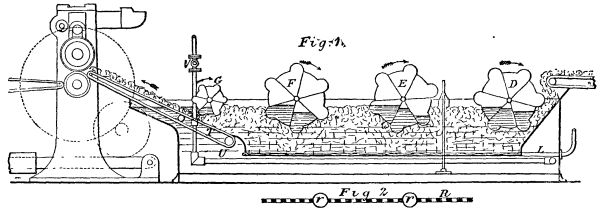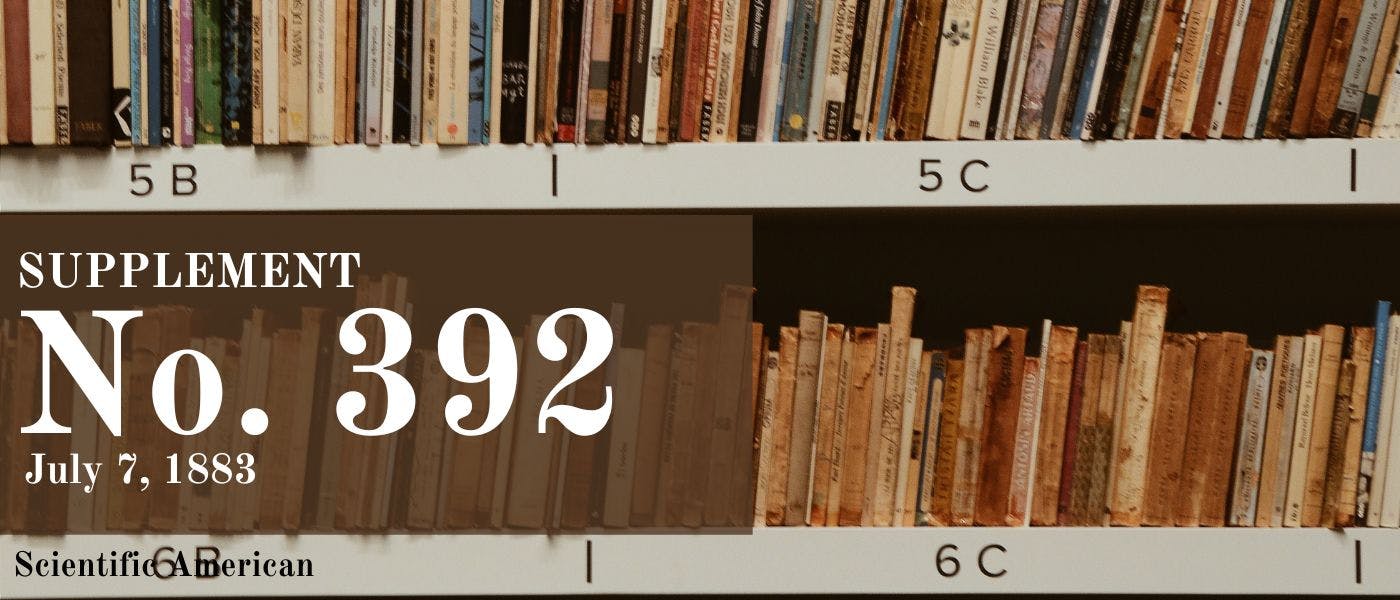Scientific American Supplement, No. 392, July 7, 1883 by Various, is part of the HackerNoon Books Series. You can jump to any chapter in this book here. WASHING MACHINE FOR WOOL.
WASHING MACHINE FOR WOOL.
The washing machines in use for wool on the rake principle have during the last few years experienced many improvements in the details of their arrangement, which we have illustrated at different times in our columns. The introduction of these improvements and alterations shows that the washing of wool has attracted more attention on the part of observant manufacturers and machine makers, and demonstrated at the same time that the machines hitherto in use, with all their advantages, left much to be desired in other respects. The main difficulty with all washing machines for wool has been the avoidance of felting of the wool, which tendency is increased by the use of warm water for washing and by the agitation that some consider necessary for a thorough cleansing of the wool and removal of the adhering impurities, but which agitation is deprecated by others.

Referring to our different illustrations of improvements in this direction, our subscribers will observe that the tendency of all these has been to keep the wool floating in the water, and to apply all mechanical appliances required for its cleansing and pressing as much as possible while it is in this suspended condition. The success which the different appliances and improvements mentioned by us have had when used for the class of wool for which they are intended, has induced us to look up any attempts in a similar direction which have been made on the Continent, where the subject has attracted attention, as well as with us. We therefore give the annexed illustration of a machine invented by a German woolen manufacturer, which in many respects is a wide departure from the acknowledged type in use in this country. As with the English machines, the wool enters from a creeper at one end, passes through a long trough, filled with water or lye, ascends an inclined plane, and passes out through a pair of squeezing rollers. The invention mentioned applies to the treatment in the trough which latter is shown in our illustration at K. It has a second bottom, a little distance from a false one, at K. The false bottom is traversed in its whole length by an air pipe, communicating with the atmospheric air outside the trough. From this longitudinal pipe other pipes branch off at right angles at stated intervals, as shown in section in Fig. 2. These smaller pipes contain a number of small perforations on their upper part, through which the air ascends into the water in innumerable small bubbles. This is one of the principal aims of the invention, for in ascending the bubbles lift the wool more or less to the surface and tend to open it out without the risk of doing so by any mechanical means liable to produce felting. This is the same effect that is produced in many cases so successfully in boiling. Instead of rakes the inventor has placed four hexagonal drums into the trough, marked D, E, F, G. The flat parts of these drums are made of perforated metal and set back a little. This produces an alternate passing of the water into and out of them during their revolution and consequent sucking and repulsing of the wool, which also likewise agitates it. These drums are made wide at the entrance end of the trough and gradually narrower toward the delivery end. The pipe, V V, is the usual steam pipe for heating the water.
We have said before that the improvements introduced into the wool washing machines nearer home have been of advantage for the wools for which they are intended, and possibly the invention just described will also be valuable in some cases.--Tex. Manuf.
About HackerNoon Book Series: We bring you the most important technical, scientific, and insightful public domain books.
This book is part of the public domain. Various (2005). Scientific American Supplement, No. 392, July 7, 1883. Urbana, Illinois: Project Gutenberg. Retrieved https://www.gutenberg.org/cache/epub/8742/pg8742-images.html
This eBook is for the use of anyone anywhere at no cost and with almost no restrictions whatsoever. You may copy it, give it away or re-use it under the terms of the Project Gutenberg License included with this eBook or online at www.gutenberg.org, located at https://www.gutenberg.org/policy/license.html.

